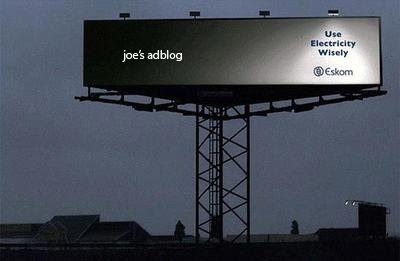Advertising Techniques Biography
He was born in Pittsfield, Massachusetts on October 28, 1847.
In 1864, William James Carlton started selling advertising space in religious magazines. The agency was called Carlton and Smith, although almost nothing is known about the Smith partner. In 1868, Carlton hired Thompson as a bookkeeper. Eventually Thompson found that soliciting and sales were much more profitable and he became a very effective salesman for the small company. In 1877, Thompson bought the agency for $500 and renamed it J. Walter Thompson Company. Notably, Thompson paid $800 for the Carlton and Smith furniture in the same transaction.
Realizing that he could sell more space if the company provided the service of developing content for advertisers, Thompson hired writers and artists to form the first known creative department in an advertising agency. He is credited as the "father of modern magazine advertising" in the US.
Thompson, having served on the USS Saratoga in the Civil War, was a passionate sailor. He owned a variety of vessels, including a seagoing houseboat, a steam, (Stella). He headed the NY Yacht Club, for which his title as Commodore and his portrait became famous within the Company. He lived at 11 East 68th Street in Manhattan.
The J. Walter Thompson Company was incorporated in 1896. In 1899, Thompson opened an office in London. An avid traveler, Thompson went abroad nearly every summer for 20 years, and rarely came back without important accounts. He saw New York as ‘the flagship’ office for a company with no geographical restrictions. "It has no limitations. Any spot on earth where goods are to be sold by advertising is inside the fence of the Thompson field", said Thompson.[1]
In 1900, JWT published a house ad explaining trademark advertising. This was the first known commercial explanation of what we now know as branding. Thompson soon became known for his philosophy of drawing a straight line between the manufacturer and the consumer.
In 1916, Stanley B. Resor and several partners bought the company from the aging Thompson for $500,000.
In 1930, a letter addressed to Thompson arrived from soon-to-be president Franklin D. Roosevelt asking for a job for his son Elliott, guaranteeing ‘he has a perfectly good mind.’
Thompson had died in 1928.
He was born in Pittsfield, Massachusetts on October 28, 1847.
In 1864, William James Carlton started selling advertising space in religious magazines. The agency was called Carlton and Smith, although almost nothing is known about the Smith partner. In 1868, Carlton hired Thompson as a bookkeeper. Eventually Thompson found that soliciting and sales were much more profitable and he became a very effective salesman for the small company. In 1877, Thompson bought the agency for $500 and renamed it J. Walter Thompson Company. Notably, Thompson paid $800 for the Carlton and Smith furniture in the same transaction.
Realizing that he could sell more space if the company provided the service of developing content for advertisers, Thompson hired writers and artists to form the first known creative department in an advertising agency. He is credited as the "father of modern magazine advertising" in the US.
Thompson, having served on the USS Saratoga in the Civil War, was a passionate sailor. He owned a variety of vessels, including a seagoing houseboat, a steam, (Stella). He headed the NY Yacht Club, for which his title as Commodore and his portrait became famous within the Company. He lived at 11 East 68th Street in Manhattan.
The J. Walter Thompson Company was incorporated in 1896. In 1899, Thompson opened an office in London. An avid traveler, Thompson went abroad nearly every summer for 20 years, and rarely came back without important accounts. He saw New York as ‘the flagship’ office for a company with no geographical restrictions. "It has no limitations. Any spot on earth where goods are to be sold by advertising is inside the fence of the Thompson field", said Thompson.[1]
In 1900, JWT published a house ad explaining trademark advertising. This was the first known commercial explanation of what we now know as branding. Thompson soon became known for his philosophy of drawing a straight line between the manufacturer and the consumer.
In 1916, Stanley B. Resor and several partners bought the company from the aging Thompson for $500,000.
In 1930, a letter addressed to Thompson arrived from soon-to-be president Franklin D. Roosevelt asking for a job for his son Elliott, guaranteeing ‘he has a perfectly good mind.’
Thompson had died in 1928.
Advertising Techniques
Advertising Techniques
Advertising Techniques
Advertising Techniques
Advertising Techniques
Advertising Techniques
Advertising Techniques
Advertising Techniques
Advertising Techniques
Advertising Techniques
Advertising Techniques
Advertising Techniques
Advertising Techniques
Advertising Techniques
Advertising Techniques
Advertising Techniques
Advertising Techniques
Advertising Techniques




















No comments:
Post a Comment